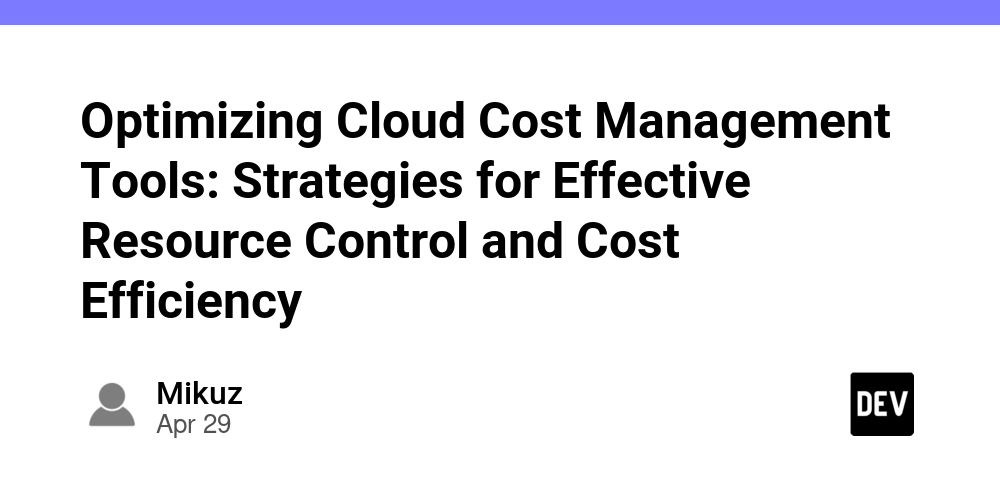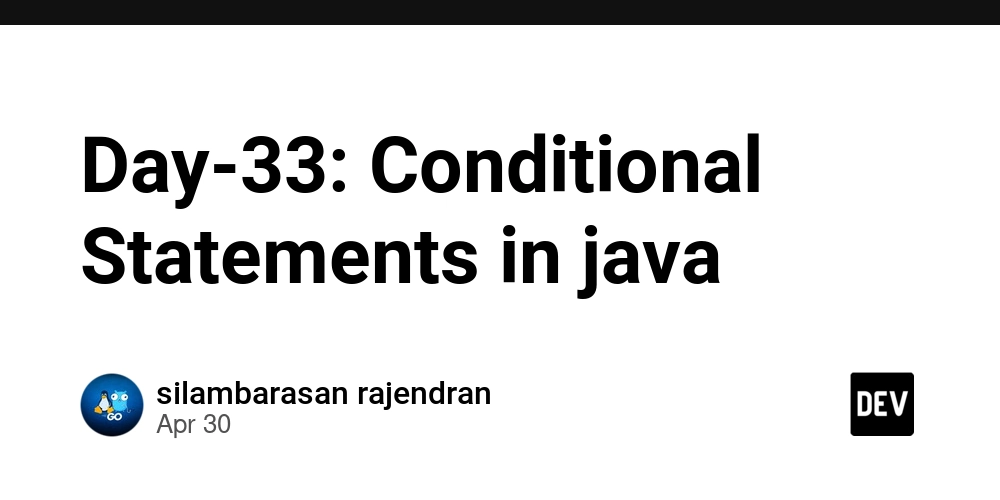Optimizing Cloud Cost Management Tools: Strategies for Effective Resource Control and Cost Efficiency
Cloud resource management is increasingly vital as companies scale their operations in the digital age. Leveraging the right cloud cost management tools has become essential for finance leaders to optimize cloud spend and ensure efficiency. Traditional resource management strategies often fail to align with the dynamic, usage-based nature of cloud services, requiring a more agile and strategic approach to maintain control over costs. For years, businesses operated on fixed-resource models, purchasing hardware and infrastructure with predictable, long-term lifespans. The approach was straightforward: once assets were acquired, they were depreciated over time, and financial planning followed a fixed pattern. However, the cloud has disrupted this model by offering on-demand resources that fluctuate in cost based on usage. As cloud services became integral to operations, managing and forecasting these variable expenses posed significant challenges. Today, cloud costs can grow unexpectedly without a clear structure or process to track them. As more companies embrace cloud infrastructure, finance leaders need to rethink how they manage, allocate, and optimize their cloud resources. Below are five strategies that can help finance teams stay on top of cloud resource management and ensure financial control. 1. Fixed Resource Management Models Don’t Apply to Cloud The days of managing static, long-term assets are gone. Cloud costs vary with real-time usage, which means traditional budgeting methods that work for hardware and infrastructure don’t apply to the cloud. To effectively manage costs, finance teams should switch to a rolling forecast model, where cloud resource usage and associated costs are monitored continuously and updated regularly. This allows for better adjustment to fluctuations in usage and avoids unexpected budget overruns. Setting clear cost thresholds and using automated systems to control resource allocation can help prevent excessive spending. Cloud cost management tools, such as automated scaling or resource deactivation, can keep cloud usage in check by powering down non-essential services during off-peak hours. 2. Finance and IT Collaboration is Key Gone are the days when finance controlled all aspects of resource allocation. In the cloud environment, collaboration between finance and IT departments is essential for managing cloud resources effectively. IT departments make daily decisions on resource allocation and usage, while finance needs to track costs and ensure they stay within budget. A collaborative approach fosters better communication, allowing both teams to identify areas where resources can be optimized and costs reduced. Regular meetings between finance and IT are vital to stay aligned, ensuring that both parties understand the costs associated with specific cloud resources and initiatives. 3. Treating Cloud Resources as Strategic Business Investments Rather than simply focusing on cost-cutting, companies should view cloud resources as strategic investments that can drive business growth and innovation. Cloud services support scalability, flexibility, and faster product development, all of which are essential for modern businesses. Treating cloud costs as a business-enabling investment ensures that resources are aligned with broader organizational goals, such as expanding market share, improving customer experience, or accelerating product timelines. Finance leaders must assess cloud spend in the context of business value. For example, during product development or infrastructure upgrades, it may be necessary to temporarily increase cloud resources to meet growing demands. Understanding when higher spend is justified enables smarter financial decisions that prioritize long-term business success. 4. Tagging Resources for Clear Cost Allocation One of the most effective ways to manage cloud resource costs is through consistent tagging. Tagging cloud resources by department, project, or initiative helps finance teams understand where every dollar is spent. It provides transparency into resource allocation, making it easier to spot inefficiencies and optimize costs. By enforcing clear tagging policies and performing regular audits, companies can ensure that all cloud resources are tracked properly. Additionally, using cloud cost management tools to categorize and analyze spend based on usage patterns can provide valuable insights into how resources are being used and where adjustments can be made. 5. Proactive Monitoring of Cloud Resource Usage In the cloud, costs can spiral quickly without proactive monitoring. Waiting until the end of the month to review cloud usage often leads to surprises, making it difficult to take corrective action in time. Finance teams must implement real-time tracking systems that alert them to anomalies in resource usage or spending patterns. By setting up alerts for spikes in usage or spen

Cloud resource management is increasingly vital as companies scale their operations in the digital age. Leveraging the right cloud cost management tools has become essential for finance leaders to optimize cloud spend and ensure efficiency. Traditional resource management strategies often fail to align with the dynamic, usage-based nature of cloud services, requiring a more agile and strategic approach to maintain control over costs.
For years, businesses operated on fixed-resource models, purchasing hardware and infrastructure with predictable, long-term lifespans. The approach was straightforward: once assets were acquired, they were depreciated over time, and financial planning followed a fixed pattern. However, the cloud has disrupted this model by offering on-demand resources that fluctuate in cost based on usage. As cloud services became integral to operations, managing and forecasting these variable expenses posed significant challenges.
Today, cloud costs can grow unexpectedly without a clear structure or process to track them. As more companies embrace cloud infrastructure, finance leaders need to rethink how they manage, allocate, and optimize their cloud resources. Below are five strategies that can help finance teams stay on top of cloud resource management and ensure financial control.
1. Fixed Resource Management Models Don’t Apply to Cloud
The days of managing static, long-term assets are gone. Cloud costs vary with real-time usage, which means traditional budgeting methods that work for hardware and infrastructure don’t apply to the cloud. To effectively manage costs, finance teams should switch to a rolling forecast model, where cloud resource usage and associated costs are monitored continuously and updated regularly. This allows for better adjustment to fluctuations in usage and avoids unexpected budget overruns.
Setting clear cost thresholds and using automated systems to control resource allocation can help prevent excessive spending. Cloud cost management tools, such as automated scaling or resource deactivation, can keep cloud usage in check by powering down non-essential services during off-peak hours.
2. Finance and IT Collaboration is Key
Gone are the days when finance controlled all aspects of resource allocation. In the cloud environment, collaboration between finance and IT departments is essential for managing cloud resources effectively. IT departments make daily decisions on resource allocation and usage, while finance needs to track costs and ensure they stay within budget.
A collaborative approach fosters better communication, allowing both teams to identify areas where resources can be optimized and costs reduced. Regular meetings between finance and IT are vital to stay aligned, ensuring that both parties understand the costs associated with specific cloud resources and initiatives.
3. Treating Cloud Resources as Strategic Business Investments
Rather than simply focusing on cost-cutting, companies should view cloud resources as strategic investments that can drive business growth and innovation. Cloud services support scalability, flexibility, and faster product development, all of which are essential for modern businesses. Treating cloud costs as a business-enabling investment ensures that resources are aligned with broader organizational goals, such as expanding market share, improving customer experience, or accelerating product timelines.
Finance leaders must assess cloud spend in the context of business value. For example, during product development or infrastructure upgrades, it may be necessary to temporarily increase cloud resources to meet growing demands. Understanding when higher spend is justified enables smarter financial decisions that prioritize long-term business success.
4. Tagging Resources for Clear Cost Allocation
One of the most effective ways to manage cloud resource costs is through consistent tagging. Tagging cloud resources by department, project, or initiative helps finance teams understand where every dollar is spent. It provides transparency into resource allocation, making it easier to spot inefficiencies and optimize costs.
By enforcing clear tagging policies and performing regular audits, companies can ensure that all cloud resources are tracked properly. Additionally, using cloud cost management tools to categorize and analyze spend based on usage patterns can provide valuable insights into how resources are being used and where adjustments can be made.
5. Proactive Monitoring of Cloud Resource Usage
In the cloud, costs can spiral quickly without proactive monitoring. Waiting until the end of the month to review cloud usage often leads to surprises, making it difficult to take corrective action in time. Finance teams must implement real-time tracking systems that alert them to anomalies in resource usage or spending patterns.
By setting up alerts for spikes in usage or spending, finance teams can take immediate action to adjust resource allocation before costs escalate. Empowering IT teams to manage their cloud budgets and use cost control tools like automated scaling and resource scheduling ensures that everyone shares accountability for cloud spending, fostering a culture of proactive cost management.
Final Thoughts: Building a Sustainable Cloud Resource Strategy
Successfully managing cloud resources requires a shift in how companies approach both budgeting and resource allocation. Instead of relying on outdated, fixed resource models, finance teams need to embrace a dynamic, collaborative approach that integrates IT and finance, encourages business-driven investment, and ensures real-time visibility into cloud spend.
By adopting these strategies, finance leaders can navigate the complexities of cloud resource management and position their companies for sustained growth and success. Investing in cloud cost management tools that offer automation, real-time alerts, and clear cost tracking is key to optimizing cloud spend and ensuring that cloud resources contribute to business goals.
This proactive, strategic approach to cloud resource management will help finance teams maintain control over cloud costs while driving business innovation forward.





































































































































































![[The AI Show Episode 145]: OpenAI Releases o3 and o4-mini, AI Is Causing “Quiet Layoffs,” Executive Order on Youth AI Education & GPT-4o’s Controversial Update](https://www.marketingaiinstitute.com/hubfs/ep%20145%20cover.png)







































































































































































































































































_NicoElNino_Alamy.jpg?width=1280&auto=webp&quality=80&disable=upscale#)































































































![Craft adds Readwise integration for working with book notes and highlights [50% off]](https://i0.wp.com/9to5mac.com/wp-content/uploads/sites/6/2025/04/craft3.jpg.png?resize=1200%2C628&quality=82&strip=all&ssl=1)















![Apple Restructures Global Affairs and Apple Music Teams [Report]](https://www.iclarified.com/images/news/97162/97162/97162-640.jpg)
![New iPhone Factory Goes Live in India, Another Just Days Away [Report]](https://www.iclarified.com/images/news/97165/97165/97165-640.jpg)






































































































